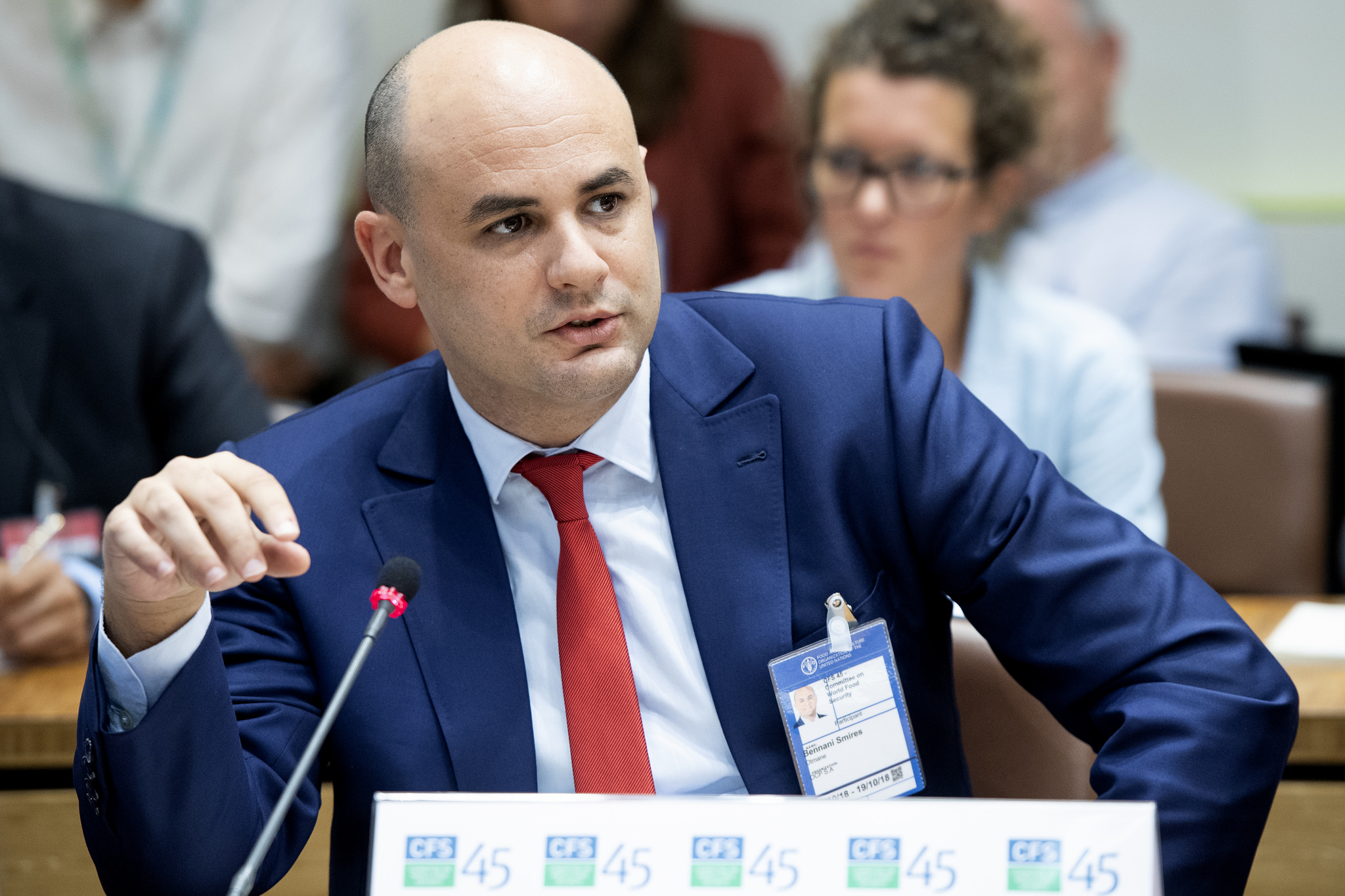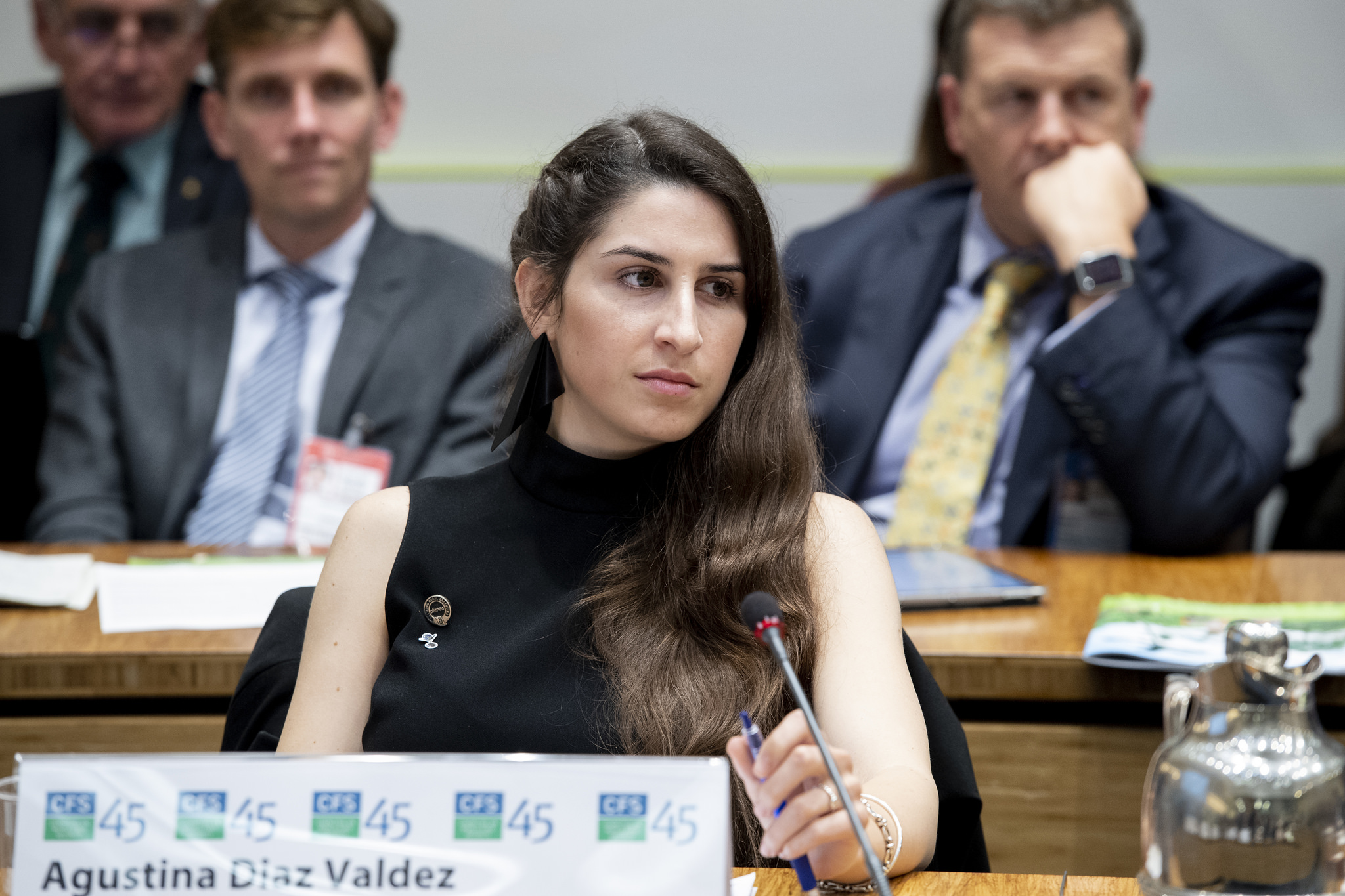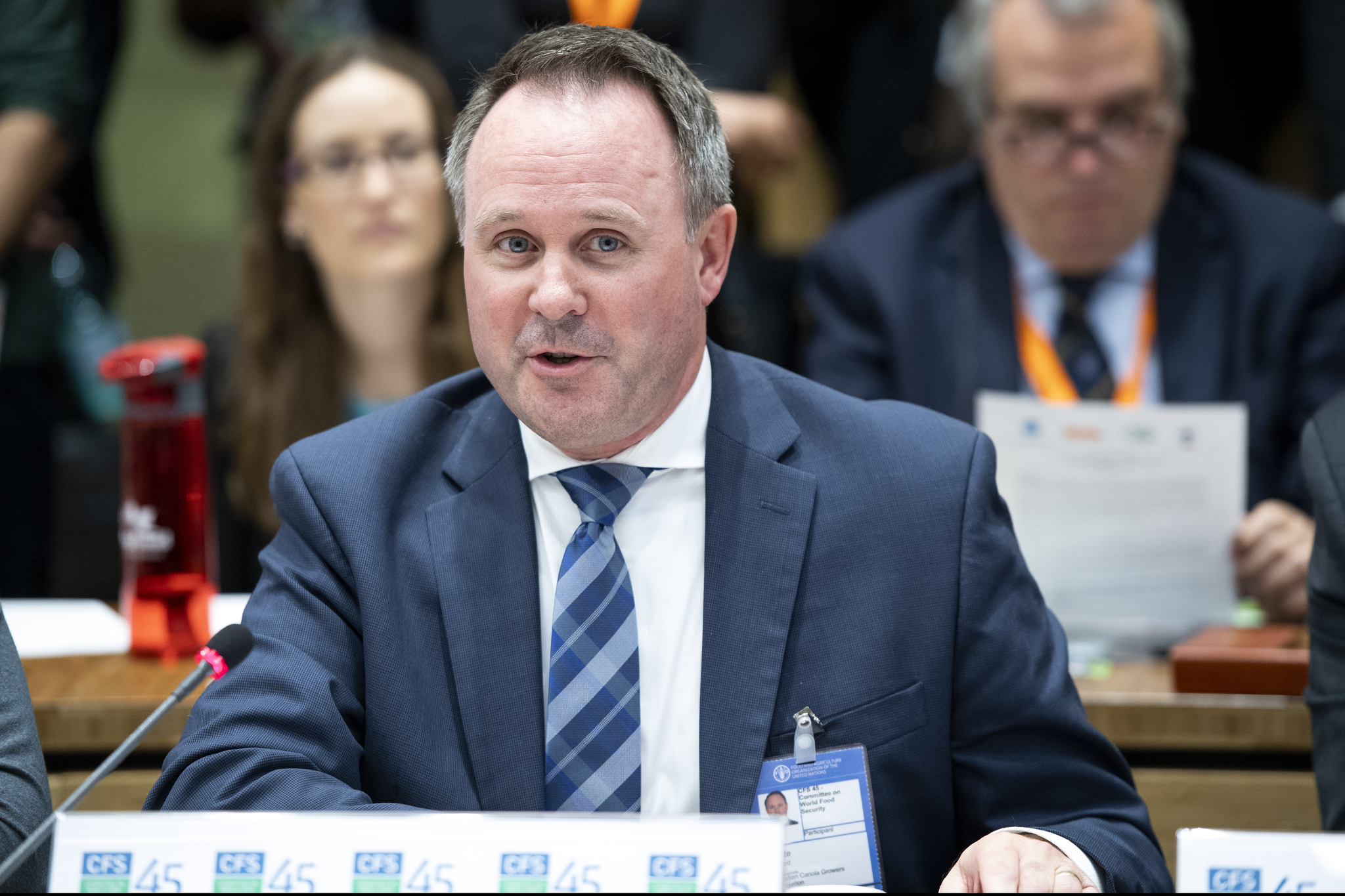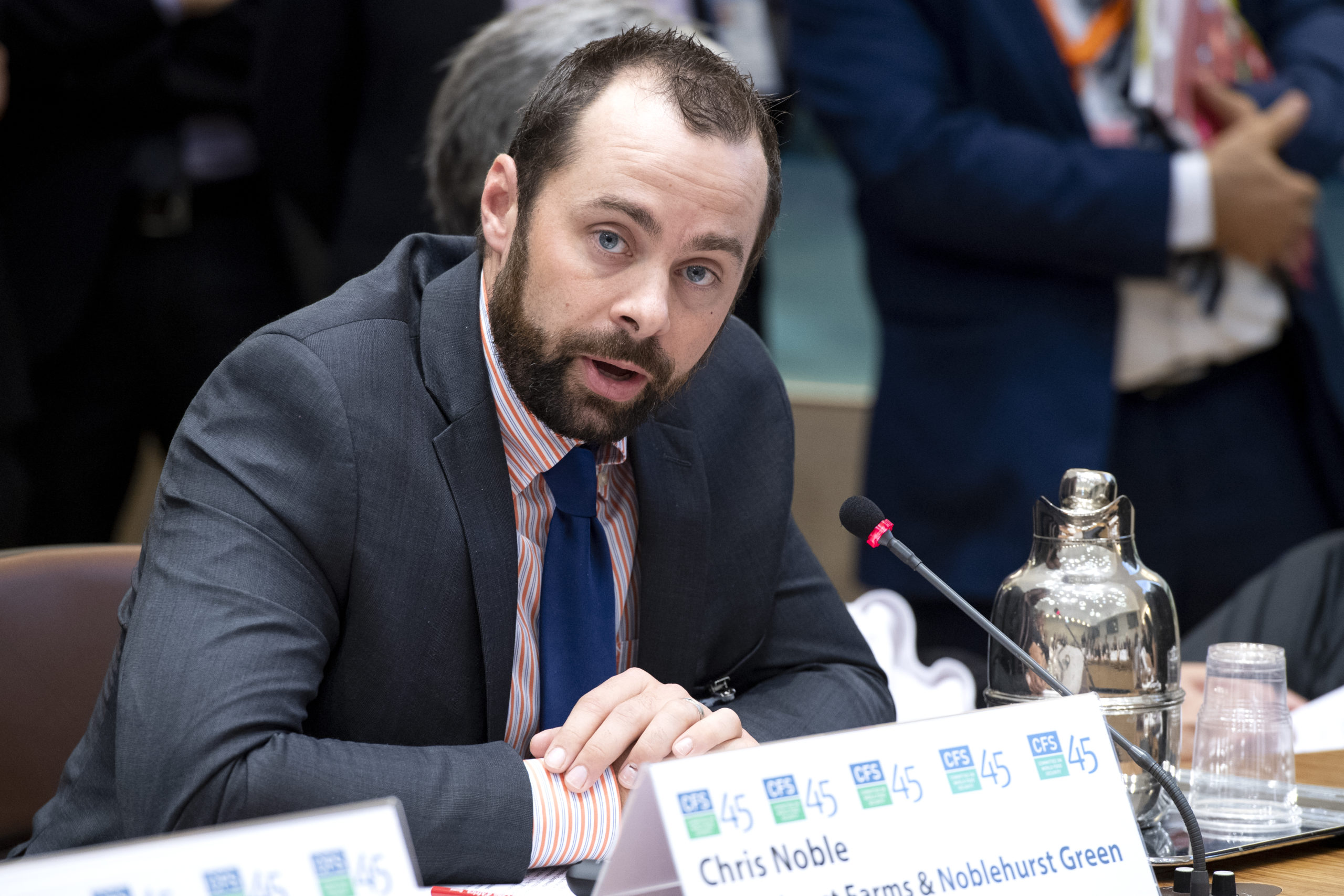With global hunger on the rise for the third year in a row, Farming First reports back from discussions around the future of farming at this year’s UN Committee on World Food Security (CFS) meeting in Rome.
Despite huge advances in agriculture, the world’s farmers continue to face the double-edged challenge of feeding a growing population whilst also safeguarding natural resources. With just 12 years to avert disastrous global warming but with the world’s hungry now numbering 821 million, farmers need solutions that allow them to produce more with less.
So what does the future of farming look like?
A panel of experts from around the world discussed the ways in which new technologies and innovation could help farmers practice agroecology at a side event co-hosted by Farming First and the International Agri-Food Network.
For crop farmers, this can mean harnessing the latest advances in biotechnology that have developed naturally pest-resistant varieties of crops like maize and cowpea.
By planting improved seeds that have pest-fighting qualities, farmers can avoid the threat of
crop pests such as Fall Armyworm, pod borer or stemborer, and reduce their reliance on
synthetic crop protection products.
“These are good examples of how innovation can actually contribute to optimization of
inputs,” said Nancy Muchiri, senior manager at the African Agricultural Technology
Foundation.
Pod borer resistant (PDR) cowpea, she explained, allowed farmers to reduce the number of
times they needed to spray insecticides from five to eight times per season to just two,
placing less pressure on the environment.
“When looking at this question of reduced external inputs, effective agriculture should look
at the whole agroecological system, recognising the inter-relationships and interdependencies while innovating for optimal performance,” Nancy added.

Nancy Muchuri (Credit: FAO/Carlo Perla)
Another input that can be optimised to bring enhance both productivity and environmental stewardship is fertilizer, particularly in areas where it is currently under-used, such as sub-
Saharan Africa.
“With innovation, we can allow it to not go down the same route as others have gone down in the past, and we can leapfrog with innovation,” explained Otmane Bennani-Smires, executive vice-president at phosphate company OCP.
By understanding specific soil health needs in any given area, fertilizer use can be customised to ensure land is receiving the right nutrient source.
“When you take a systemic approach that is science-based and data-based, and you’re in a position to manufacture the right type of fertilizer, it is lower [cost] to manufacture, it has bigger yields, it’s better for the environment because you’re providing the soil and crops with just the right nutrients needs, and it’s better for the farmers,” added Otmane.

Otmane Bennani-Smires (Credit: FAO/ Carlo Perla)
Helping farmers with access to better data and information about agricultural inputs can allow them to be more accurate and precise in their decision-making, which softens their environmental impact.
Craige Mackenzie, an arable and dairy farmer from New Zealand, explained nutrient management on his farm was accurate to within just 2cm.
“We spend a lot of time customising what we do but we realised we needed to start from the ground up,” Craige said. “Everything is mapped – we precisely know where to put the fertilizer, we can avoid waterways.
“We’re only limited by our imagination. If we get this right, we’re able to reduce our outputs and greenhouse gases, we’re able to increase our productivity, increase our profitability – all
of these things go hand in hand.”

Craige Mackenzie (Credit: FAO/Carlo Perla)
Chris Noble of Noblehurst Farms highlighted further the opportunity to connect agricultural productivity with environmental stewardship through nutrients recycling. Noblehurst Farms uses an anaerobic digester to capture the methane from the manure and waste, producing electricity to power the farm.
“The digester became the interface between the farm and the dairy processing facilities as we could combine and recycle the waste nutrients from both facilities,” Chris explained.
Such innovative projects are increasingly being taken up by young farmers, who are both more aware of environmental concerns and more connected to advances in technologies.
“We should promote sustainability,” said Agustina Diaz Valdez, youth committee member at the World Farmers’ Organisation. “Lands that are in use now will be needed in the future and we have to continue producing.”

Agustina Diaz Valdez (Credit: FAO/Carlo Perla)
Rick White, CEO of the Canadian Canola Growers Association, explained how canola farmers in Canada had successfully incorporated new technology to produce more while using fewer
resources.
“Canadian advances in technology and best practices have enabled farmers to adopt conservation or no-till farming systems. This system involves little disturbance to the soil,” Rick explained.
The results of no-till meant a 71 per cent reduction in greenhouse gas emissions and a 43
per cent fall in energy use.
“The future is exciting,” Rick added. “It provides endless possibilities in terms of farming better and more smartly. Precision agriculture and greater data promise to generate new tools and new information to make better management decisions on the farm.”

Rick White (Credit: FAO/Carlo Perla)
The full side event at CFS45 is available to playback on Farming First TV’s YouTube channel. For more information on agroecology, check out Farming First’s series, Agroecology in Action.
Featured photo credit: FAO/Carlo Perla




